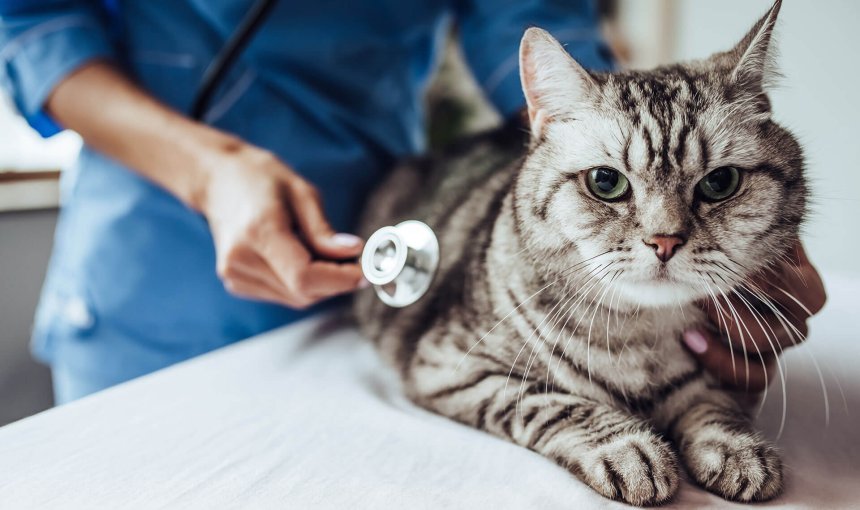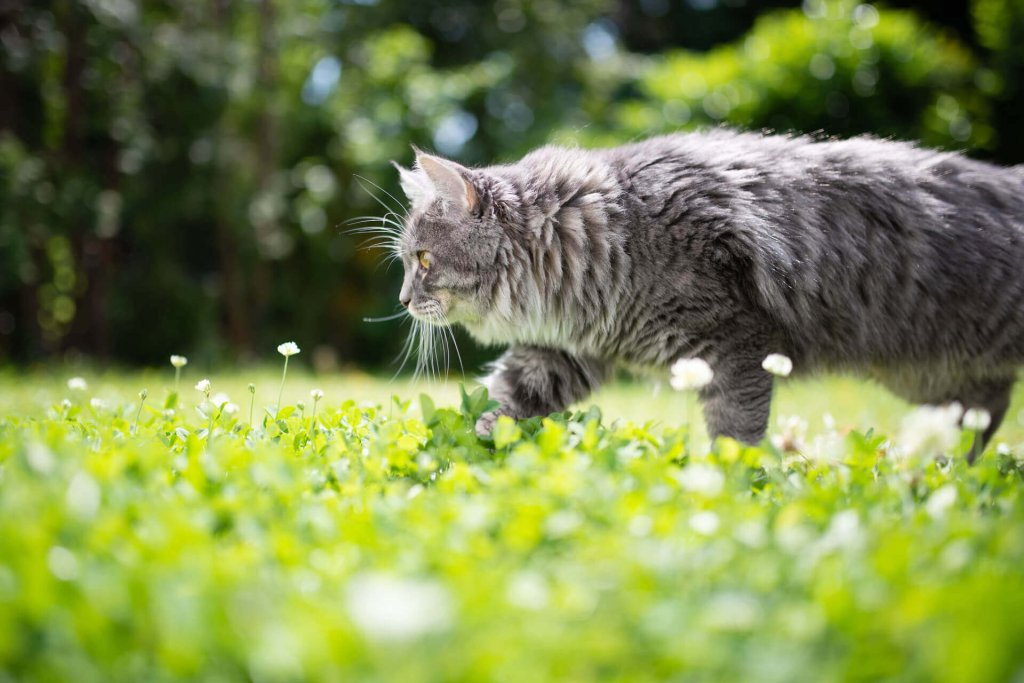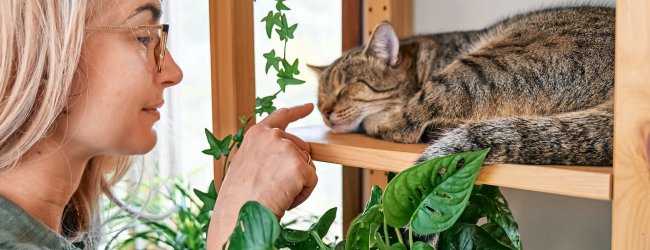Cat Parents Beware: Learn The Top 5 Most Common Household Dangers For Cats
You love your cat and want to keep them out of harm's way. But could danger be lurking in your home? Find out what you need to watch out for as a responsible pet parent in this post.

Chances are, your cat feels safe in your home. But little do they know, your house (or yard) may be full of cat hazards. So besides your cat running away, there’s other dangers to be aware of as a loving cat parent. Here are the five most common household dangers for cats, plus more tips to keep your cat safe.
Common household dangers for cats
Think your house is safe for kitty? You might want to think again! Check the list below (and your house) for these top 5 household hazards for cats. Do you have some of these in your home? The answer is most likely YES!
1) Poisonous plants
Cats are curious creatures, and plants can be one of their favorite playthings. Little do they know, some plants can be deadly to cats.
Not all plants are poisonous to cats, but many are. If you have houseplants, chances are you have at least one plant in your home that’s poisonous for your cat.
If a cat takes a bite of a toxic plant, reactions can vary from mild irritation to vomiting, seizures and even death.
Common plants like lillies, poinsettias and tulips are among the ones you need to watch out for. Read our full guide to plants poisonous to cats.
This doesn’t mean you have to strip your house of all greenery. Just aware of the plants that can harm your cat, and keep them out of kitty’s reach.
Also keep in mind that water with fertilizer in it can harm your cat, if ingested. Your feline might try to take a drink, so always keep watering cans away from cats.

Know everywhere your cat goes
See where they are in real-time, no matter how far they go. Get alerts if they roam too far home. Find out where they’ve been and discover their favorite spots. Let others track with you.
2) Toxic foods
Better think twice before offering your cat some human food. Many foods that are safe for us are toxic to cats. So be aware of the most common foods poisonous to cats, and keep them out of reach.
Toxic foods for cats include (but are not limited to):
- Grapes (and raisins)
- Chocolate
- Avocados
- Onions
- Raisins
- Xylitol, or any foods containing the artificial sweetener
3) Household chemicals
Most homes contain some household chemicals, from cleaning products to nail polish remover. Keep chemicals away from your cat and make sure to clean up any spills properly. Contact with a hazardous chemical may cause poisoning and/or chemical burns in your cat. For safety, keep those items stored away a cupboard.
Also while cleaning, it’s wise to keep your cat in another room until area is dry and safe again.
Household chemicals that are toxic to cats include:
- Pesticides
- Snail, insect or rat poison
- Weed killers
- Antifreeze
- Cleaning products
- Pool chemicals
- Fertilizers
- Paint thinner
Remember, many cats eat grass, so be careful not to let your kitty go roaming if there may be fertilizers or other dangerous chemicals around.

4) Medications
Another household danger for cats is medication. Never give medicine to your cat without your vet’s guidance. Keep all human medication out of reach of your kitty (that includes pills dropped on the floor). Your cat will likely try to eat it if they can reach it. And medicines can be extremely toxic to cats.
Common causes of poisoning in cats include:
- Aspirin
- Pain relievers
- Vitamins and supplements
- Dog flea treatments
5) Dangerous areas and objects
When it comes to household hazard for cats, be on the look out for toxic plants, foods, medications and chemicals. Besides that, you may also want to consider these commonly overlooked dangers:
Open windows: When cats discover an open window, they may try to get out. Which could lead to them getting stuck, injured or worse.
Of course, you can still let fresh air into the home. For safety, use a screen or stay in the room with your cat when the window’s open.t
Balconies: Balconies can also be danger-zones for cats. Even though cats are known for their great balance, they can still fall and suffer serious injuries. To protect your feline friend, consider cat-proofing your balcony with a safety net.
Ropes and cables: Playing with ropes and cables can be fun entertainment for your cat. But it can also pose a serious risk to your furry friend. Keep cables, ropes, and other dangerous household items out of reach of your feline.
Cat poisoning symptoms
Cat poisoning can come in a variety of forms – your cat may have ingested, inhaled, or touched something toxic. Depending on the substance, symptoms of cat poisoning vary.
Here are some common signs of poisoning in cats:
- Coughing
- Diarrhea
- Vomiting
- Drooling
- Twitching
- Seizure
- Difficulty breathing
- Lethargy
- Cat not eating
- Coma
- Skin inflammation
- Unstable walking
- Shock, collapse
- Drinking (and urinating) more often than usual
- Inability to urinate
- Irregular heartbeat
- Blood in urine/stool
- Bruising
- Nosebleeds
- Jaundice
- Fever
How quickly a cat becomes sick depends on the toxin involved, and the amount ingested. So it’s essential to get your cat to the vet as soon as possible.
What to do if your cat is poisoned?
If you think your cat may have been poisoned or ingested something toxic, don’t panic. Call your vet right away. In case you can’t reach your vet, you can visit an emergency veterinary clinic. Or call an animal poison control hotline for help (fees may apply).
Pet Poison Control Help Hotline Resources by Country
| United States & Canada | Pet Poison Helpline 855-289-0358 ASPCA Animal Poison Control 888-426-4435 |
| United Kingdom | Animal Poison Line 01202 509000 |
| Australia & New Zealand | Animal Poisons Helpline 1300 869 738 (AU) 0800 869 738 (NZ) |
If you know which poison your cat came into contact with, collect a sample of it (or the package/label). This information will be helpful when talking to a vet or helpline.
Don’t induce vomiting in your cat, unless instructed to by a vet. In some cases, vomiting a toxic substance could cause more damage.
Conclusion
Unfortunately, the list of cat dangers could be much longer. Risks are everywhere and not always obvious to us humans. And we can’t follow our cats everywhere, and protect them all the time. But the good news is, by being aware of the potential dangers to your cat, you’re already helping to keep them safe.
Sources: Cornell, VCA Hospitals




